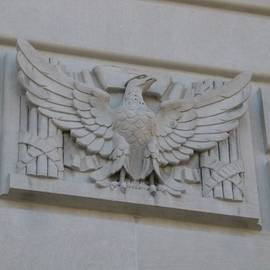
T.J. Blakeman is really into turn of the century downtowns — a personal fascination he said goes back years:
I’ve always loved downtowns. I grew up in a small town called Ashland west of Springfield. It has about 1,350 people. I actually did the same kind of stuff there. When I was in middle school and high school during the summers, I’d go to the library, and it was full of these old pictures no one had gone through, and I’d go through and scan them. So, I just kind of developed this passion at a young age for classic downtown architecture — this kind of architecture that we’ll never see again. If it’s gone, it’s gone forever. We don’t build like that anymore. We don’t build with the same craftsmanship. So that’s always appealed to me, and the way that those buildings interact with the public space.
It’s a passion he expresses on his Champaign History blog, where he focuses on individual lots in downtown Champaign and traces the built environment of that address. For instance, the reader can follow the history of 115 North Neil Street from when the W. Lewis and Co. Department Store Building was built in 1900 to today. Blakeman has been posting entries on his blog since late last year.
When I spoke with Blakeman recently, he stressed that his Champaign History blog is a separate project from anything he does with his regular job with the City of Champaign planning department; however, he collected many of the images through work he was doing for the city at the Champaign County Historical Archives. He chooses images for his blog from the roughly 6,000 digitized pictures of historical Champaign he has on his hard drive. He said:
Most of it was me sitting at a computer in the Urbana Library, at a scanner, going through their collection, getting all these photographs for the Champaign 150 Anniversary. I had permission, of course, to do all that, and they were supporters of the exhibit I put on. Every time I collect an image, most people don’t want to actually part with their image, so I will scan it. I’ll give them back their original and encourage them to donate it to the Champaign County archive.
Blakeman writes on the blog, “My goal with this blog is to inspire a renewed sense of pride and history in the built environment of Champaign, Illinois.”
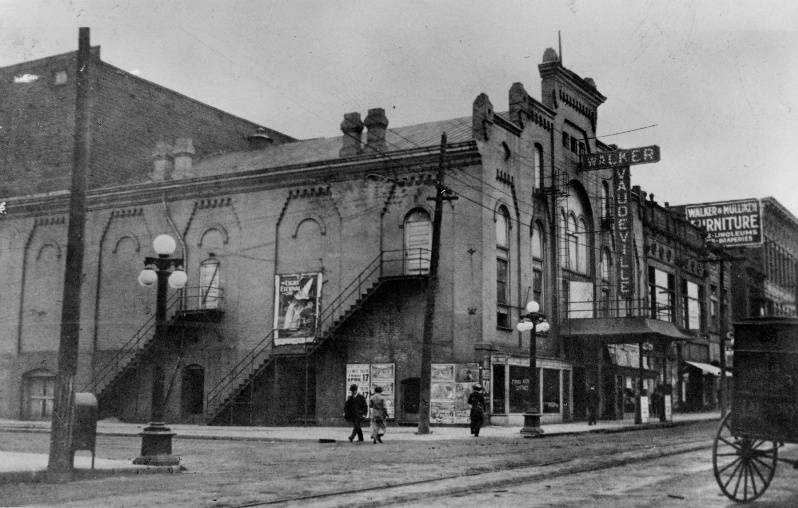
Walker Opera House
Constructed: abt. 1887
Razed: abt 1917 (Razed)
A short window
Blakeman explained that part of his motivation is digitizing and recording before historical artifacts are lost, literally:
I feel like we’re in this short window where enough of the long time families in Champaign — whether it’s the Robesons who owned their own department store since the 1860s or the Kuhn’s and Youngermans — have their own photographs and we have to be very careful that if something happens in those families that these photographs don’t get discarded. And so it’s important to collect as much as we can.
A living blog
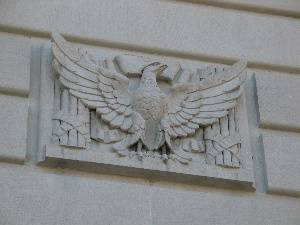 Blakeman writes on his site that he wants to have a “living blog” where readers interact and add their own memories and research. He explained how the blog grew out of online interaction he was already having with others about C-U history:
Blakeman writes on his site that he wants to have a “living blog” where readers interact and add their own memories and research. He explained how the blog grew out of online interaction he was already having with others about C-U history:
There are two really good Facebook groups that I’m a member of: You Know You Grew Up in Urbana Champaign If You Remember… and Champaign Urbana History. I have a number of friends in these groups and we all comment back and forth and we love a good mystery. We find a picture that we’ve never seen before and we try to figure out where it’s at and when it was taken. The problem is that Facebook is set up that when you post a picture, a whole bunch of people comment, and then as more people post it will get shoved further and further down and then someone posts the same picture. Facebook is not the place to collect history. So, I went with a blog. There have been some good comments, and I’m hoping there will be even more over time.
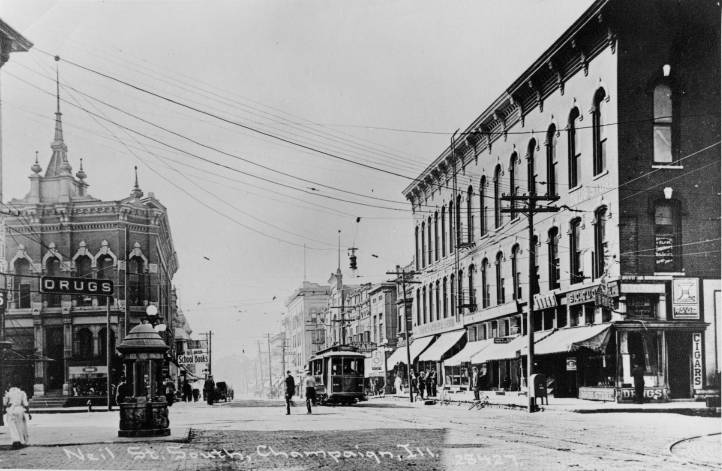
A view of the Gazette Building (left) with the Metropolitan Building (right).
Photo courtesy of the Champaign County Archives
Sixty downtown Champaign buildings lost in less than fifty years
I asked Blakeman if there was anything the average local person doesn’t realize about downtown Champaign. He said:
I don’t think people realize how many buildings we’ve lost. We’ve lost over sixty. Many through fire, but many have been torn down to make way for surface parking. We’ve lost whole blocks. The obvious one that comes to mind is the Flatiron Block. It was seven buildings over in front of the Orpheum. Seven separate buildings in a triangular shape. They were all torn down starting in 1969 into 1970 to expand the parking for Sears. The thing of it was that those buildings came down in 1970, and by 1974 plans had been announced to build Market Place Mall and Sears was the first Tennant in 1976 when they moved into the mall. It was bad timing. The good news from the city standpoint is that we actually have a plan to turn that parking lot into a brand new city plaza. So we may in the end gain some really good public space surrounding new buildings like the Hotel, M2, and One Main.

A “Trolley Traffic Jam” at the intersection of Main, Church and Neil Street. Photo courtesy of the Champaign County Archives.
Anchors
While some downtown Champaign buildings may have been lost forever, Blakeman said that the downtown itself is still going strong today — just with a different focus than in the past:
I think it’s so incredibly important to understand all the back history of a downtown area. To understand what buildings were where and how we should rebuild. We are, as a nation — when we look at our downtowns — rebuilding back to the principles of turn of the century cities. Walkable. Compact. All modes of transportation. We may not have trolley cars, but we have buses that serve the same function. Trying to deemphasize the car in terms of surface parking, trying to put them in decks so that we can build a stronger economic base. I’m not pretending that the downtown will ever be what it was. We may not ever have five department stores in our downtown, but our restaurants and great nightlife are just as much of an anchor as Sears and J.C. Penny’s and Robeson’s. It’s just a different way of looking at it. Those were the anchors for 1900. Destihl and Bacaro, Cowboy Monkey, and all the rest — these are the anchors of 2000.
Mesker Facade
One interesting link Blakeman has on his blog is to a digitized version of the Mesker Facade 1903 Catalog. This catalog was for George L. Mesker & Company out of Evansville, Indiana, a company that sold — among other things — building facades for delivery. Blakeman explained of the link:
I’m not sure why I put that on there. To my knowledge, we don’t have any Mesker Facades in Downtown. I wish we did. I put it on there more as an identifier. It’s just interesting that they sold everything. They would sell you the store front or the cornice. I think it’s just amazing how we would build buildings like that — we would just order the facade of a building out of a catalog and put it on the building.
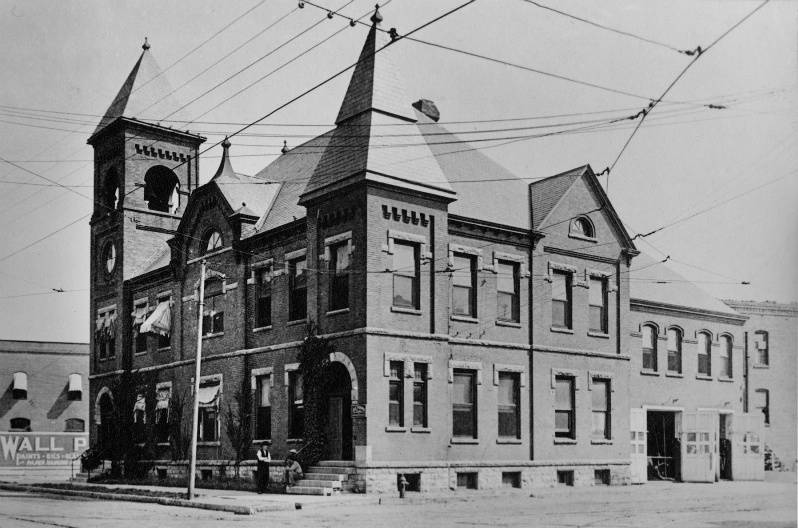
Another view of the original City Building on the northeast corner of University Avenue and Neil Street. Photo courtesy of the Champaign County Historical Archives.
Sticking to Champaign
I asked Blakeman if he planned to branch out and maybe cover the history of some of the lots in downtown Urbana. He replied:
I’ll stay with Champaign. My heart has always been here as a transplant. I know Champaign. I don’t know the history of Urbana as well. There are some really great historians here in town that do, and maybe they would start that, or something similar, and I’d be happy to help them. But I don’t have the photographs; I don’t have the history. But I will do Campustown and some of midtown. I’ll do the older commercial areas of Champaign. I don’t know if I would ever branch out and do Country Fair Shopping Center or something like that. I might. We’ll see.
“Put a building on it”
I asked Blakeman about the dynamic of looking at the past through the modern lens of digitized photos and social media, and also about the origins of his own enthusiasm. He elaborated:
I’ve learned a lot from my own investigating and just from listening to stories. I grew up with my great grandparents. Both of them were in my life. They didn’t pass away until I was a senior in high school. It’s not a glamorization of what we used to have. I know that times are just as complex now as they were in 1900, 1920, but I’ve always loved this period and I think it’s so important that we continue to share it.
I’m not here to change the course of history — the blog is here for whoever wants to look at it. There’s a natural interest in old photography. I think it’s a fascinating story, and it’s the story of every city in the country. It’s a story about what the future could be, in my mind. I hope people look at these pictures and realize Downtown Champaign, Downtown Springfield, Downtown Decatur, Downtown Danville, Downtown Peoria — they don’t have to be places that are forgotten. They could actually be powerful centers of commerce again. We’ve already got the built environment. All that time and energy. I hope people look at these pictures and think, ‘Wow, I wish they would build something similar but better. Let’s fill in these holes. Let’s realize that a surface parking lot isn’t the best use for a downtown block. Let’s put a building on it.’
That should be my motto: Put a building on it.
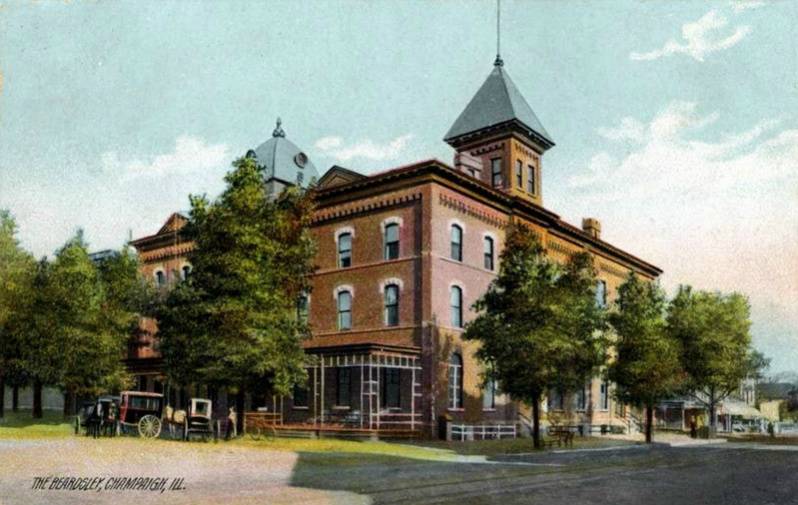
This colored postcard shows the Beardsley in its original state, seen here looking from the intersection of Hill and Neil Streets.








